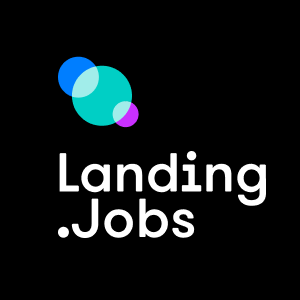In the fast-evolving realm of web development, mastering fullstack frameworks has become essential. This guide delves into the top 10 fullstack frameworks in 2023, offering insights into the tools that empower developers to excel in this dynamic field.
1. ReactJS (with NestJS):
Discover how ReactJS and NestJS combine for a potent fullstack solution, enhancing data flow and maintainability.
2. Angular (with Spring Boot):
Explore Angular’s synergy with Spring Boot, creating robust and modular applications suitable for enterprise-level projects.
3. Vue.js (with Django):
Learn how Vue.js and Django streamline the process of building dynamic applications with minimal backend complexities.
4. Ember.js (with Ruby on Rails):
Uncover the efficiency of Ember.js and Ruby on Rails, perfect for swiftly developing ambitious projects through streamlined configuration.
5. Svelte (with Express.js):
See how Svelte’s unique approach to UI components pairs with Express.js for fast-loading, user-friendly applications.
6. Laravel (with Vue.js):
Experience the blend of Laravel’s developer-friendly features and Vue.js’s reactivity for a balanced fullstack development journey.
7. ASP.NET Core (with ReactJS):
Delve into Microsoft’s ASP.NET Core and ReactJS combo, creating modern, high-performance applications with cross-platform capabilities.
8. Meteor (with Angular):
Explore Meteor’s real-time capabilities alongside Angular, delivering seamless data synchronization and instant updates.
9. Gatsby (with Node.js and GraphQL):
See how Gatsby, Node.js, and GraphQL collaborate to craft high-speed, content-driven applications in the fullstack arena.
10. Symfony (with Ember.js):
Discover the potential of Symfony and Ember.js, combining flexibility and modularity for feature-rich PHP applications.
Choosing the right fullstack framework for your needs
Selecting the most relevant fullstack framework requires a thoughtful approach that considers your project’s unique demands, team expertise, and industry trends. To ensure you’re making an informed choice, follow these steps:
- Define project requirements:
Begin by outlining your project’s goals, features, scalability requirements, and expected user interactions. Different frameworks excel in various aspects, such as real-time updates, data handling, or UI responsiveness. Knowing your project’s needs will guide your framework selection.
- Evaluate tech stack compatibility:
Consider your existing technology stack, including databases, third-party integrations, and APIs. Choose a framework that seamlessly integrates with your stack to prevent compatibility issues and streamline development.
- Assess learning curve:
Evaluate the learning curve of each framework. If your team is familiar with a particular programming language, choosing a framework that aligns with that language can accelerate the development process.
- Community and documentation:
A strong community and comprehensive documentation are essential. An active community ensures quick issue resolution and updates, while well-documented frameworks simplify the learning process.
- Scalability and performance:
Depending on your project’s growth prospects, consider the scalability and performance capabilities of the framework. Will it handle increased user loads without compromising performance?
- Ecosystem and libraries:
Explore the ecosystem surrounding the framework. Robust libraries, plugins, and extensions can save development time and enhance functionality.
- Check industry trends:
Stay up-to-date with industry trends and developer surveys. Frameworks that are gaining traction in the developer community are likely to be relevant and well-supported.
- Experiment and prototype:
Create small prototypes or sample projects using a few different frameworks. This hands-on experience will give you insights into the ease of development, documentation quality, and overall workflow.
- Seek expert opinions:
Consult colleagues, mentors, or online developer communities for advice. Their experiences and opinions can provide valuable insights into the strengths and weaknesses of different frameworks.
- Consider longevity:
While new frameworks might offer exciting features, consider the longevity and stability of the framework. Opting for a well-established framework can provide more confidence in its long-term support.
Remember, there’s no one-size-fits-all solution. The “best” framework is the one that aligns most closely with your project’s specific requirements and your team’s expertise. By methodically evaluating options, experimenting, and seeking guidance, you can confidently choose a fullstack framework that sets your project up for success.
Explore Landing.Jobs’ fullstack job openings, and take your career to new heights in the world of fullstack development. Embrace innovation, seize opportunities, and master the art of fullstack frameworks to shape the digital future.







0 Comments